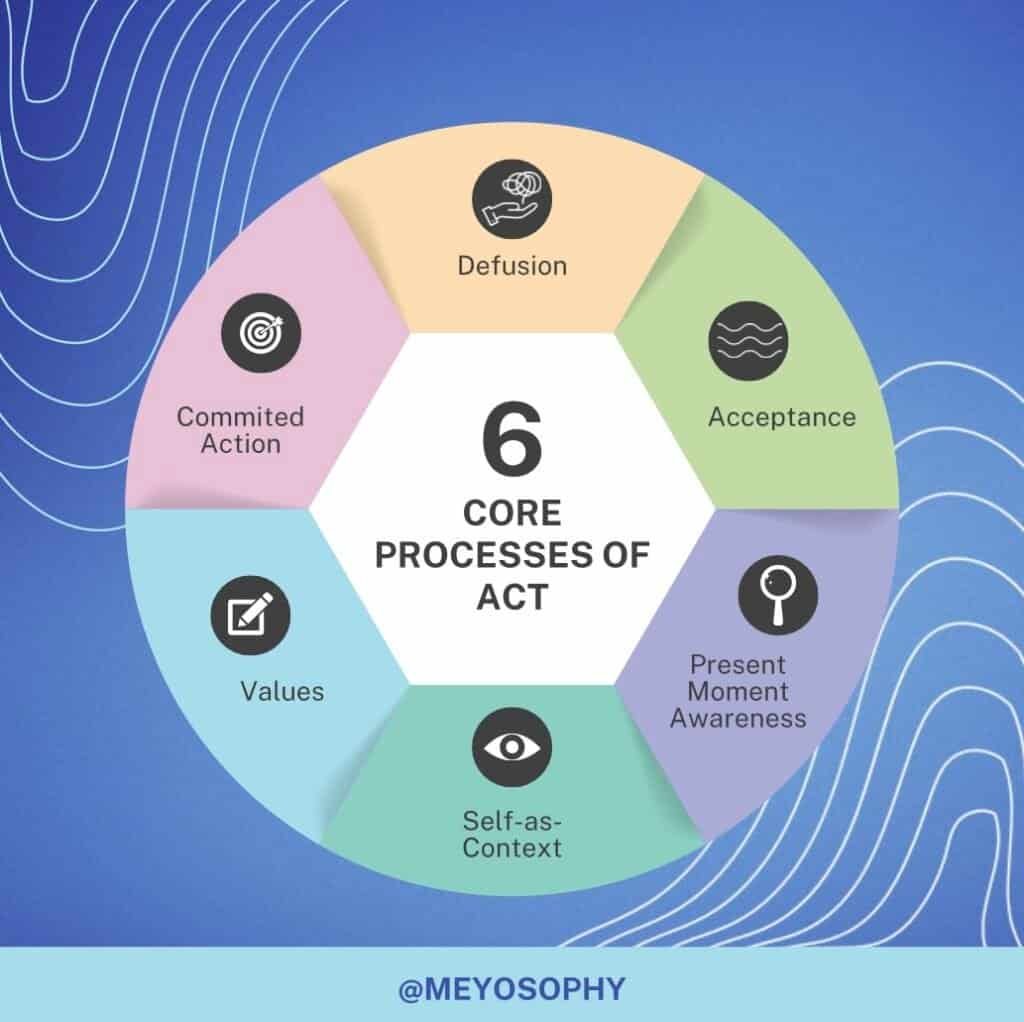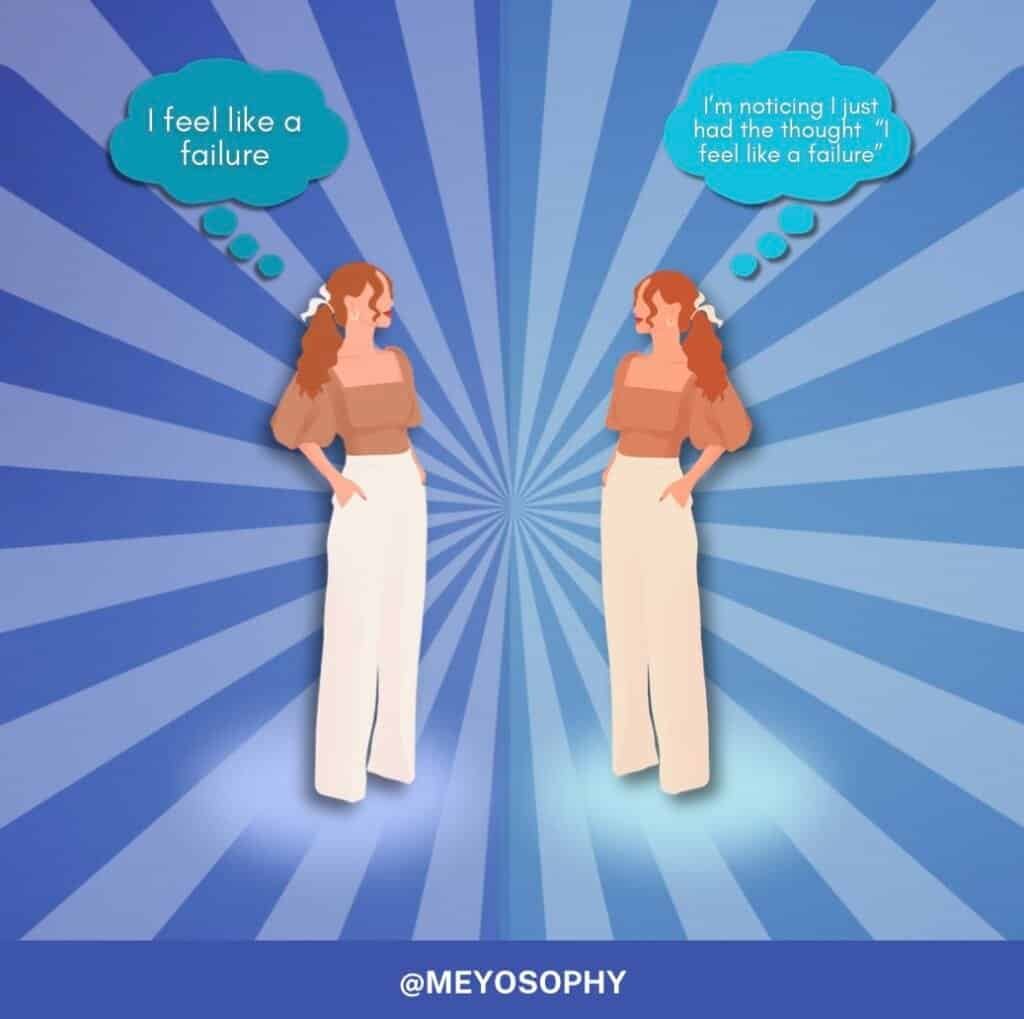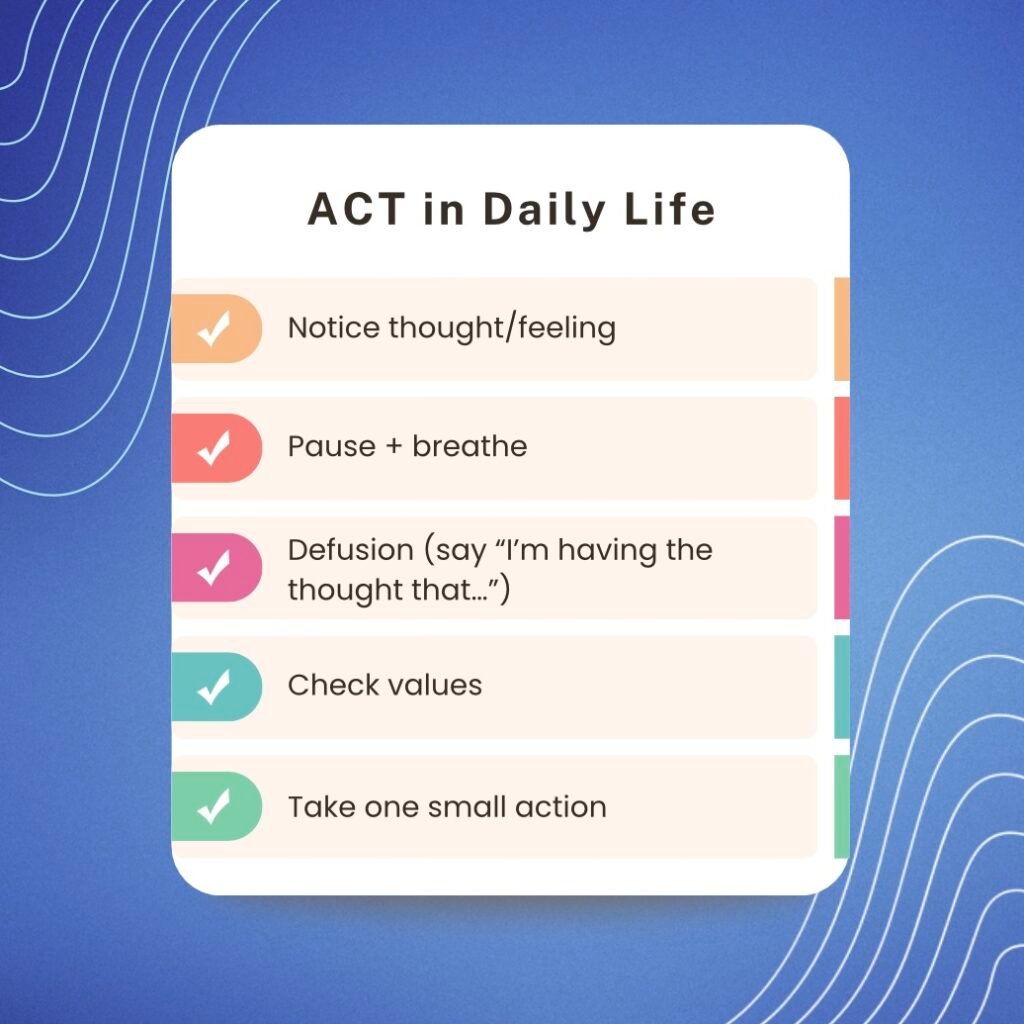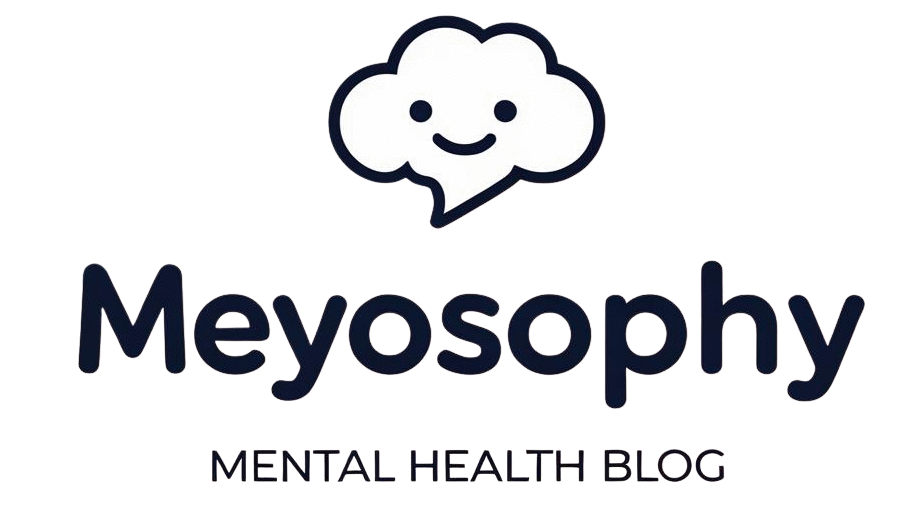Disclaimer: I’m not a mental health professional, everything here is shared from research and personal experience. If you’re feeling overwhelmed or need support, please consider talking to a qualified professional. You’re not alone. If you’re in the U.S., you can call or text 988 anytime. For help in other countries, visit https://findahelpline.com.
If you’re tired of arguing with your thoughts, ACT (Acceptance and Commitment Therapy) offers a different way in: not by fighting what you feel, but by learning to live a meaningful life alongside unpleasant thoughts and emotions. That doesn’t mean giving up on feeling better, it means changing your relationship to what’s going on inside so it has less control over your choices.
Below is a practical guide to ACT with bite-sized exercises you can use today to unstick yourself from rumination, avoidance and perfectionism.
What ACT actually is
ACT is a behavioural therapy rooted in mindfulness and contextual behavioural science. Its aim isn’t to eliminate difficult thoughts, but to help you build psychological flexibility. The ability to notice internal experiences (thoughts, feelings, urges) while still acting in ways that align with what matters to you (your values)[1]. ACT uses six core processes: acceptance, cognitive defusion, present-moment contact, self-as-context, values, and committed action. Together these help you live a fuller life even when things feel messy.
The core processes
- Acceptance: making room for emotions instead of struggling with them.
- Defusion: stepping back from literal belief in your thoughts (they’re not commands).
- Contact with the present: using mindfulness to anchor yourself in the now.
- Self-as-context: noticing you’re the one aware of experiences, not the experiences themselves.
- Values: clarifying what matters most to you.
- Committed action: taking small, value guided steps even when it’s uncomfortable.
Now let’s turn these into exercises you can actually use.

Practical ACT exercises
1) Cognitive Defusion — “Leaves on a Stream” (5 minutes)
Why: Creates distance from sticky thoughts so they lose power.
How: Sit quietly. Imagine a slow stream. When a thought appears (e.g., “I’m failing”), place that thought on a leaf and watch it float away. If another thought arrives, put that on another leaf. Keep watching the stream. No need to push thoughts away, just watch them pass.
Quick alternative (30s): Say your thought out loud in a silly voice: “I’m the worst at this!” (silly voice). Not to mock yourself, but to notice the thought as words, not facts. Instead of leafs you can also picture boats, balloons flying away or anything you can picture well.

2) Acceptance — “Expand Around It” (2–3 minutes)
Why: Reduces the struggle and gives you breathing room.
How: Notice where the feeling sits in your body. Breathe into that area. Imagine you have more space around it: a soft, warm room where the feeling can be allowed to exist. Say silently: “I’m open to noticing this feeling right now.” Fully let the feelings be.
3) Present Moment — 5-4-3-2-1 Grounding (1–2 minutes)
Why: Quickly brings attention back to the here-and-now.
How: Name 5 things you can see, 4 you can touch, 3 you can hear, 2 you can smell (or imagine), 1 thing you can taste (or notice your breath). Slow down and notice the sensory details. This technique is also great when feeling anxious.
4) Self-as-Context — Observer Exercise (2–3 minutes)
Why: Helps you feel separate from passing experiences.
How: Close your eyes. Imagine you’re sitting by watching yourself on a stage. Notice your breathing, thoughts, and feelings as if you’re the audience. You are not the thoughts; you’re the one noticing them.

5) Values Clarification — The Eulogy / 5-Minute Compass (10–15 minutes)
Why: Values orient behaviour; therapies that change behaviour often work because they reconnect us with our values.
How: Imagine someone speaking at your 80th birthday. What would you want them to say about how you lived? Write 3–5 qualities (e.g., “kind,” “curious,” “there for family”). For each quality, pick one tiny action you could take this week to live that value (e.g., “call a friend,” “read 15 minutes a day”). Take your time for this one.
6) Committed Action — Tiny Behavior Steps (weekly practice)
Why: Change happens through tiny, repeated acts.
How: Choose one value-driven action and break it into the smallest possible step. If value = connection, tiny step = send a text to one person today. If value = health, tiny step = add one serving of vegetables to dinner tonight etc.
Putting it together: a simple weekly ACT plan
- Daily (2–5 min): Morning values reminder (write one sentence: “Today I value ___; I will ___”).
- Daily (1–3 min): 5-4-3-2-1 grounding as needed.
- 3x/week (5–10 min): Leaves on a Stream + tiny committed action.
- Weekly (10–20 min): Values review + plan one tiny step for next week.
This keeps practice doable and prevents ACT from becoming another “to-do” that you force yourself to complete.
Common pitfalls & how to avoid them
- “I should be rid of these thoughts” – ACT is not about making thoughts disappear; it’s about changing how you relate to them. If you still think you should be free of thoughts, notice that thought with curiosity. It’s not the thoughts that hurt us, it’s the way we relate to those thoughts.
- Doing exercises mechanically – Practice with curiosity; label experiences rather than judging practice quality.
- Setting big actions – If your committed action is too big, you’ll avoid it. Start ridiculously small. Tiny wins build momentum.
Short scripts you can paste into your phone
- Defusion quick line: “There’s that worry thought again. It’s getting boring”
- Acceptance quick line: “I notice this feeling. I can still move toward what matters.”
- Values check: “Is this action moving me toward my values?”
- Tiny action prompt: “One small thing: ___ (today).”
Does ACT work?
ACT is supported by a growing evidence base and is effective for anxiety, depression, chronic pain, and more. It focuses on flexibility over symptom control and often complements other therapies and medication approaches [1][2].
Final thought
ACT isn’t a trick to make pain vanish. It’s a practical, more loving approach to stop giving so much of your life to the battle with your inner experience. Try a defusion exercise, name one value, and take one tiny step toward it today. Over time, those little steps add up to a life that feels more yours, even when the weather in your mind is stormy.

Personal Note
I myself have found ACT one of the best therapies for my anxiety and depression. At times these two can consume your mind and your thoughts. All I wanted is to push those thoughts and feelings away. It almost seemed like a battle. With ACT you actually welcome those thoughts and feelings lovingly (which is hard I know) and take actionable steps. I stopped being fully consumed by my inner world and getting some distance from it. That distance combined with the actionable steps changed a lot. You are not your thoughts, you’re the one observing them. There’s the big difference.
Want to read more about ACT? Visit the website of the ACBS: https://contextualscience.org/act for more information. The organization has a list of ACT practitioners or extra exercises if you want to practice by yourself.
Sources
[1] Hayes, S. C., Strosahl, K. D., & Wilson, K. G. (2011). Acceptance and Commitment Therapy: The Process and Practice of Mindful Change. Guilford Press.
[2] Harris, R. (2009). ACT Made Simple: An Easy-to-Read Primer on Acceptance and Commitment Therapy. New Harbinger Publications.
[3] American Psychological Association. “Acceptance and Commitment Therapy (ACT).” APA Practice Guidelines / Resources. Available online.
No. Acceptance is about allowing internal experiences, while you take action. It reduces avoidance, which actually frees you to act.
You might notice small shifts quickly (less struggle, clearer choices), but deeper change grows with repeated practice. Getting clear on your values can be very eye opening for some and inspire quicker change. However real change takes time.
Mindfulness is a component of ACT (present-moment contact), but ACT pairs mindfulness with values and committed action.


What a great way to calm down and get grounded! Will have start incorporating these into my daily habit
I am hearing about the Acceptance and Commitment Therapy for the first time. Thank you very much for the valuable information.
Saving this for next time because I’m such an over thinker and I usually get lost in my own head. It can be so overwhelming honestly. This was very informative.
This really resonates with me. I like the idea of not fighting my thoughts but instead learning how to live alongside them. ACT sounds like such a practical, freeing approach—I’m looking forward to trying some of these exercises.
I struggle with some of this myself. I have never heard of the leaf on the slow stream. I’ll have to try that sometime.
Thanks for sharing this! It’s always good to know healthy ways to deal with anxieties, worries, and negative thoughts. It’s pretty interesting that there’s a set of methods based on accepting these feelings rather than ignoring or avoiding them.